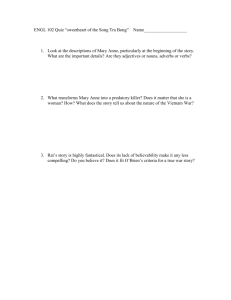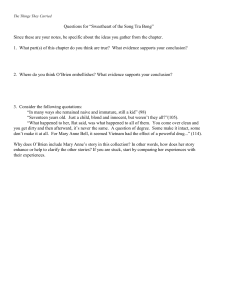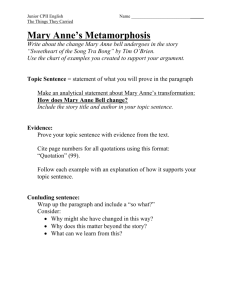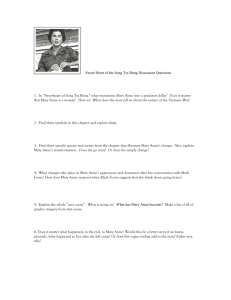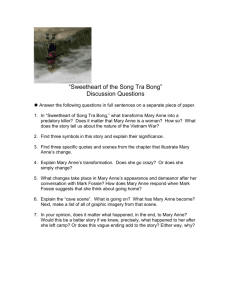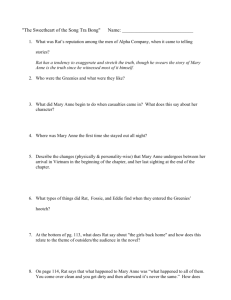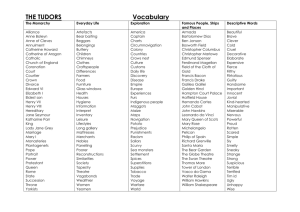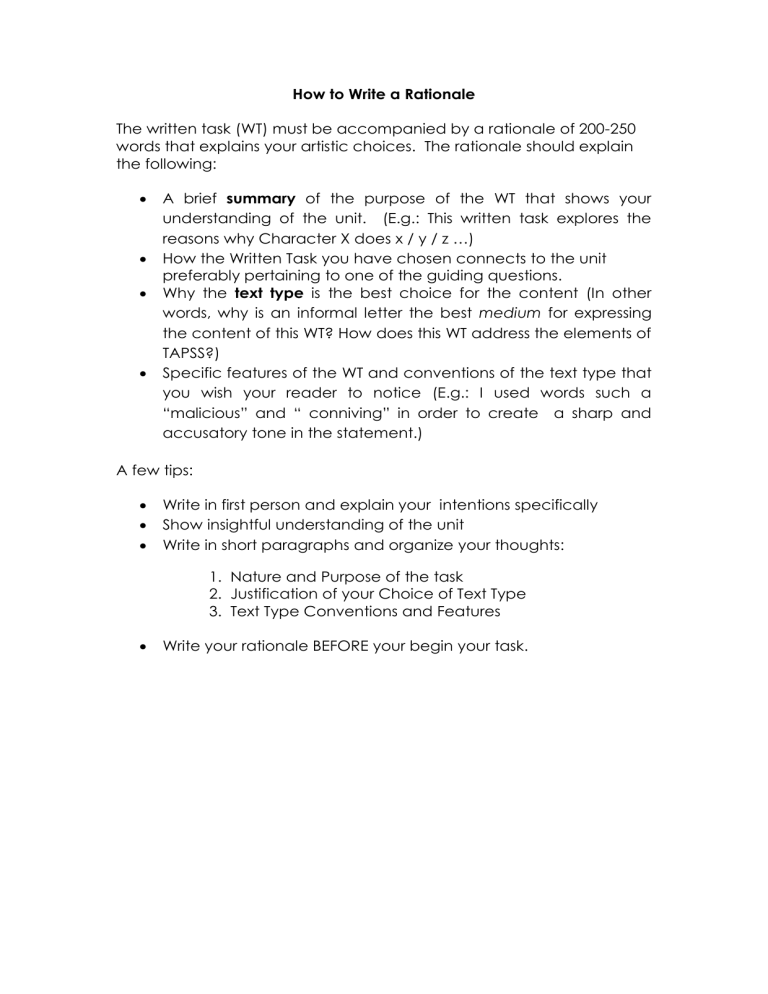
How to Write a Rationale The written task (WT) must be accompanied by a rationale of 200-250 words that explains your artistic choices. The rationale should explain the following: A brief summary of the purpose of the WT that shows your understanding of the unit. (E.g.: This written task explores the reasons why Character X does x / y / z …) How the Written Task you have chosen connects to the unit preferably pertaining to one of the guiding questions. Why the text type is the best choice for the content (In other words, why is an informal letter the best medium for expressing the content of this WT? How does this WT address the elements of TAPSS?) Specific features of the WT and conventions of the text type that you wish your reader to notice (E.g.: I used words such a “malicious” and “ conniving” in order to create a sharp and accusatory tone in the statement.) A few tips: Write in first person and explain your intentions specifically Show insightful understanding of the unit Write in short paragraphs and organize your thoughts: 1. Nature and Purpose of the task 2. Justification of your Choice of Text Type 3. Text Type Conventions and Features Write your rationale BEFORE your begin your task. Sample Rationale: The Things They Carried: A Psychiatric Evaluation Tim O’Brien’s critically acclaimed novel, The Things They Carried, tells the stories of Vietnam War veterans and their physical, emotional and psychological encounters with war and death, as well as their struggle to overcome war’s burdens. One of the stories in particular, “The Sweetheart of Song Tra Bong” documents the transformation of one of the veterans’ girlfriend: Mary Anne Bell. For this task, I decided to write a psychiatric evaluation on Mary Anne through the voice of a clinically trained psychiatrist. However, a large majority of the background on Mary Anne’s character is from the perspective of Mark Fossie. Letting Mark Fossie be the one to speak was intentional to show Mary Anne’s distance from society and reality. The fact that Mary Anne doesn’t speak may show her lost of humanity –a key feature that makes all humans, humans –as a result of being placed in an antagonistic war environment. It was important to correctly diagnose and evaluate Mary Anne because metaphorically, she is representative of the young soldiers who lose their innocence, purity and psychological awareness as a result of their involvement with war. Writing this psychiatric evaluation is more than just diagnosing Mary Anne and providing her with possible treatments, but more importantly, it will be a way for her boyfriend, Mark Fossie, and her family to regain some of the Mary Anne they had lost because of the war. The writing itself is structured differently from a lot of other text types. It is definitely a lot more formal, with patient information at the top, followed by the psychiatrist’s first impression, diagnosis, analysis and methods of treatment. Considering that it is a medical report, a formal doctoral tone was necessary to make it seem more realistic and to properly investigate her transformation.
